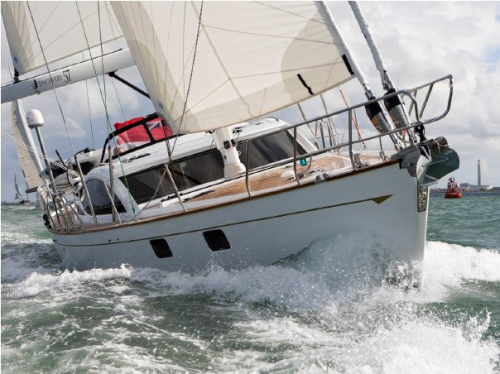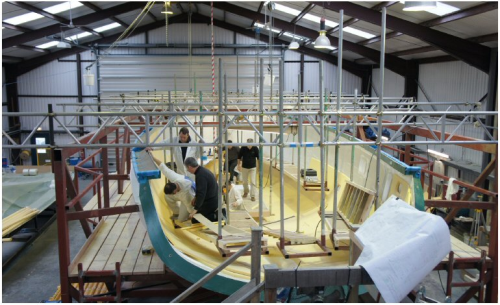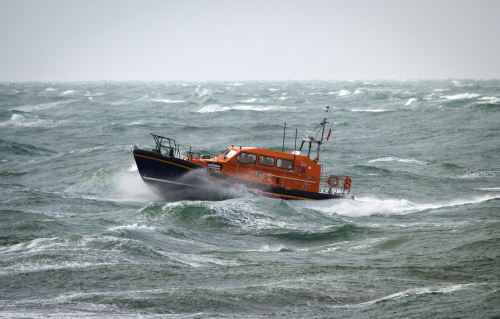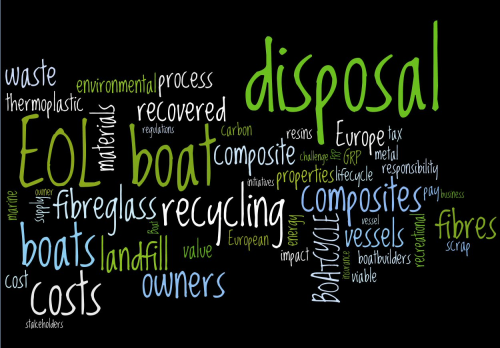



Nominally, the 2 July conference was about Boat Building Efficiently with Composites but, although this theme was indeed addressed, much of the proceedings sounded like a plea from a government belatedly convinced that, after all, Britain needs manufacturing industry, for fabricators to get stuck in, using some of the funding now available for boatbuilding and composites innovation.
The Chilworth event was organised by the Materials Knowledge Transfer Network, one of 15 KTNs formed by the Technology Strategy Board (slogan ‘driving innovation’) to give a helping hand to British enterprise sectors judged to have good potential. Composites are one such sector, with boat building a prime outlet for it.
The conference was supported by the British Marine Federation (BMF) and the National Composites Centre (NCC).
Funding opportunities
In introducing the event Andrew Thomas, technical executive BMF, said there was ‘never a better time to be in composites and that there are many opportunities.’
He pointed out that, in its drive to re-balance the British economy, the UK government has selected composites as an area worthy of particular support. He said that the UK boatbuilding industry, annually worth some £1 billion of a total £3 billion for the marine industry as a whole, is gradually recovering from the 14% dip inflicted by the post-2008 recession. Small commercial vessels, superyachts and refits are, he indicated, leading the recovery and over 60% of boats produced are exported.
Will Searle for the Composites Innovation Cluster (CIC) spoke of £60 million of funding being available for supply chain development, adding that the closing date for finance applications is in October. He explained the role of the CIC, recently inaugurated at the NCC, as being to bring manufacturing primes together with small-to-medium scale enterprises (SMEs), universities, agencies etc. in networking groups in order to stimulate innovation.
So far, he said, the CIC comprises 19 suppliers, six universities and three influential networks (also known as ‘catapults’). A great example of networking, he suggested, has been the collaboration between Bombardier Aerospace and Princess Yachts over aspects of composite technology and use.
Adrian Waddams, expanding on the role of the Technology Strategy Board’s KTNs, said they existed to stimulate innovation through knowledge transfer. He also mentioned a small business research initiative (SBRI) that targets micro businesses, offering £5000 grants to help get them started. Other grants, for SME innovation, can be up to £0.25 million. Further support includes a manufacturing advisory service, the ability to ‘plug in’ to centres of relevant academic expertise such as Southampton and Plymouth Universities and, not least, R&D tax credits.
Paul Shakespeare of Shakespeare Services Ltd felt that some of the available funding should be spent on developing educational infrastructure. He argued that defined educational pathways able to progressively elevate tradesmen from apprentices initially to fully fledged composite engineers eventually would give the sector status and help attract people into it. He lamented the difficulty of interesting school leavers and final-year pupils in a career in composites and declared that current rates of entry to the marine sector will not meet the demand for thousands of operatives that the future is likely to bring.
For some delegates, the list of agencies, initiatives, funding bodies quangos etc being trumpeted at the conference was proving somewhat overwhelming. Julian Spooner, head of composites at Princess Yachts, had a gentle dig at the ‘alphabet soup’ of organisational and initiatives’ initials, adding that the pressures of day-to-day operations leave little time for navigating through the various help channels in order to access funds that might be available.
A delegate who is a boatbuilder in Wales commented that the Welsh Assembly has addressed this point by ensuring that, for every enquirer, there is a single point of contact or ‘front person’ who acts as guide to the various funding and advice sources and who can help make initial contacts. Others hoped that this type of approach could be adopted in England as well.
Improving efficiency
On the practical boat building level suggested by the conference title, an interesting presentation was given by Nigel Stuart of Discovery Yachts and Simon Crawford of materials supplier Marineware, describing the prestige yacht builder’s journey from manual wet lay-up to resin infusion.
Details of this manufacturing transition, still in progress, and the construction of the latest product, the Discovery 57, have been given in Reinforced Plastics (see Infusing quality at Discovery Yachts), so little more need be said here except, perhaps, to reiterate some of the advantages highlighted by Stuart. These include a cleaner process with no handling of wet resin, no styrene emissions, better working conditions to which shop floor workers have reacted well, consistently high laminate quality, reduced material wastage, a thinner laminate for a given strength, a good fit when pre-fabricated interior modules are introduced into the hull, and customer appreciation of the more highly engineered aspect of the primary structure.
| ... many small boat builders are now adopting resin infusion as a natural upgrade from traditional wet lay-up. |
The speakers noted that many small boat builders are now adopting resin infusion as a natural upgrade from traditional wet lay-up. Stuart likens the transition to an extended ‘Eureka moment‘, saying: “Builders of catamarans ‘got it’ some time ago, thanks to the weight reduction possibilities of resin infusion and the criticality of this in catamarans, but now monohull builders are ‘getting it’ too.”
Steve Austen from the Royal National Lifeboat Institution (RNLI) emphasised that its lifeboats have to be engineered for high performance and survivability in extreme conditions. High-performance composites are the material basis for meeting the demanding specification of the latest FCB2 Shannon Class lifeboat, the first of which was due to be accepted the day after the conference. This craft can maintain a speed of 22 kts in force 8 gale conditions, an improvement on the 17 kts in force 7 conditions possible with the existing Mersey class boats that it will replace. The Institution has relied on the structural engineering and composites expertise of Gurit in engineering the Shannon boats to meet its onerous requirements.
In order for the charity to ’get more from the same in a time of recession,’ as the speaker put it, the lifesaving charity has been overhauling its production strategy and processes. Adopting lean techniques across the full design and production spectrum has so far enabled it to reduce costs by an average of some £300 per boat so that, cumulatively, there is significant saving. Designing the new class (Shannon) for a 50-year service life, double that specified for the existing all-weather boat fleet, should help the RNLI avoid the boom and bust production cycle that surrounds the introduction of each new boat generation, to the inconvenience of itself and its suppliers. A continuous rolling fabrication programme, under which a small number of boats will be produced each year, should even out the flow and smooth the production cycle.
The biggest change of all, however, is that the RNLI will, from next autumn, start producing its own lifeboats at a new factory in Poole, rather than outsourcing the work to independent boat builders as happens now. This will give the Institution direct control of the full production process, enabling it to integrate manufacturing activities more closely and apply ‘lean’ across the board.
Adam Sobey and Dennis Watson from the University of Southampton and Griffon Hoverwork respectively extolled the benefits of concurrent engineering, in particular having design, production and maintenance departments working together as a closely knit group. This enables close collaboration to be fostered and joint databases to be formed, while discouraging departmental ‘silos’ that work in isolation and speak separate ‘mutually incomprehensible languages.' Collaboration arising from such concurrency can be extended further with supply chain and academic participation.
Nigel Keen from the National Composites Centre described an approach for producing affordable tooling, developed by the NCC. To demonstrate low-cost manufacture of plugs suitable for small boat building businesses to use with infusion processes, an NCC team produced a set of tooling for fabricating an ocean-going single-handed racing yacht. Based on machined polystyrene on a plywood base, and finished with tooling paste, the plug is machined to its final dimensions within close tolerances. Said to be conformable, scalable and affordable, such tooling also infuses well with minimum wastage. As well as advising on its innovative approach, the NCC can hire out tools it has developed.
The tooling theme was continued by Henry Nicholson-Cole from tool and mould supplier Norco GRP Ltd who, in a joint presentation with Adrian Gillit, engineering manager at large advanced craft specialist Green Marine, pointed out that investing adequately in tooling at the outset should pay dividends later. Tooling is a critical path, he asserted, and building accuracy and repeatability into the tool avoids having to work these qualities into the moulded article subsequently. Tooling should, he added, be adaptable (future proof) and stable over time.
Adrian Gillit described how Green Marine is managing to cut costs even while maintaining quality and building ever larger high-performance vessels, such as the latest VOR65 boats for the Volvo race series and the 30 m Wally Cento designed superyacht Hamilton that the company completed last year.
“Our aim is to scale up raceboat technology but not the cost,” he declared. “Appropriate selection of materials, selective use of out-sourcing and closer integration of design and engineering functions to avoid later re-work all contribute to the outcome.”
| Labour costs are an on-going concern, ... since yacht design, engineering and building remain a labour driven undertaking. |
Labour costs are an on-going concern, Gillit admitted, since yacht design, engineering and building remain a labour driven undertaking. Despite this and the fierce competition from overseas, he argued, the skills and experience available in the UK, together with the quality and performance that are regularly achieved, mean that it can still pay to manufacture in Britain.
Large yachts were also the theme for Rod Fogg and Phil Aikenhead from Gurit in presenting a case study based on the new Swan 105. Pointing out that there is substantial demand for yachts in the 30-40 m LOA category, Nautor’s new 105 ft (32 m) long Swan being a notable example, Fogg said that the technology for such large yachts was maturing and that costs were being controlled.
The Swan 105 is the largest vessel to date to be fabricated from Gurit’s SPRINT material, described by Fogg as an ‘inside-out prepreg optimised for production.’ Computer aided design (CAD), an increasingly affordable technology, was used extensively in the design process, working to a Nautor master model.
Princess Yachts’ Julian Spooner also identified tooling as a fundamental issue and related how the Plymouth-based company has opted for integrally heated tooling so as to avoid the need to erect large ovens with their associated expense and greater energy usage. The company’s latest M-Class foam core sandwich constructed motor yachts are infused to minimise structural weight. Like sailing yachts, motor yachts are getting bigger and the largest member of the M-Class family requires 6 tonnes of resin for its infusion.
End of life disposal
Stella Job from the Materials KTN identified the end-of-life disposal/recycling issue as a particular focus of a composites resource efficiency action plan (REAP) developed as part of a scoping study by consultancy URS UK and Net Composites.
The study has been commissioned under the Waste and Resources Action Programme (WRAP), an aim of this initiative being to develop recycling pathways that result in a lower cost for material recycling routes than for sending composite waste to landfill.
Job indicated that recycling GRP, which will account for the majority of boat-derived composite waste for years to come, is feasible and that there are potential markets for recyclate, for example in construction materials. Higher level re-use applications are possible where fibres recovered are longer or aligned.
(Features on end-of-life boat disposal and GRP recycling will be available on Reinforced Plastics.com over the coming months.)
Classification societies
A brief Q&A session after the presentations touched on the issue of whether, in the small craft context, classification societies are worth the outlay involved in employing them. The consensus was that, for recreational craft builders at least, certification by Lloyds, Det Norske Verities (DNV), Germanischer Lloyd (GL) et al, although bolstering buyer confidence and vessel insurability, may on balance be of marginal benefit. If the certification route is chosen, it seems that much depends on selecting the society most appropriate to the type of vessel and manufacturer in question.
One boat builder said he would not recommend Lloyds, considering them to be not yet ‘fully at home’ with composites and requiring, for example, a separate approval for every individual fabric used. (NB: this was one delegate’s opinion.)
Another boat builder was scathing about all the Class societies asserting that ‘they get in the way for little added value.’
At the very least, it was suggested, if the certification route is to be followed, the class society chosen should be one that is open to new ideas, materials and concepts. ♦
This article will be published in the November/December 2013 issue of Reinforced Plastics magazine.
The digital edition of Reinforced Plastics is distributed free of charge to readers who meet our qualifying criteria. You can apply to receive your free copy by completing the registration form.






